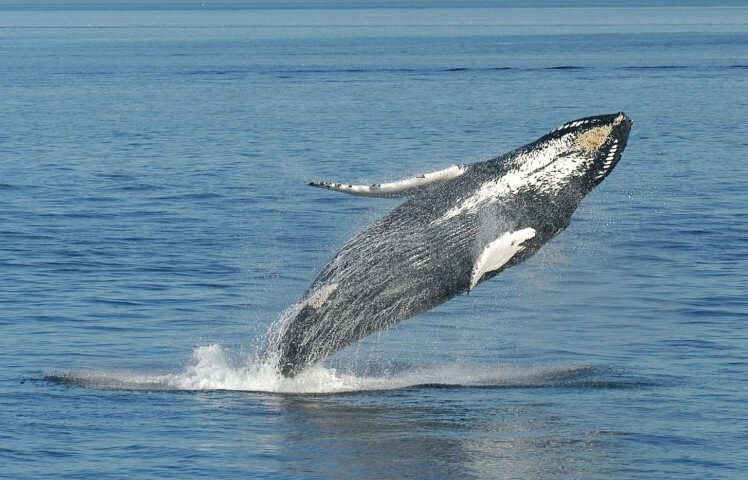Observers occasionally send us some of their whale photos. Depending on the species, GREMM’s team examines these photos in the hope of recognizing a known individual, or submits them to a research organization specializing in that particular species or sector. This week, we received a particularly crisp image of a beluga from Les Bergeronnes. ID confirmed: it’s Cumulus!
“I’m very happy that Cumulus is still with us,” exclaims Marie-Hélène D’Arcy, GREMM’s leading beluga “matchmaker”. This male was born before 1968, meaning he is over 50 years old. He has been known to researchers since 1980, making him one of the oldest individuals in the St. Lawrence beluga photo-identification catalogue. As proof, he bears identification number 98 in the catalogue! Between 1989 and 2013, Cumulus was identified nearly every summer. He had most recently been sighted in 2016. It is therefore a real pleasure to know that he was swimming opposite Les Bergeronnes on May 7.
On May 13, a herd of belugas made one observer from Saint-Irénée laugh. The belugas are swimming by in single file! “It looked as if they were practising social distancing! They were all swimming equidistant from one another,” she chuckles.
Whale in the sky
A resident of Pointe-Lebel was treated to quite a surprise on May 10. “A huge white swell drew my attention offshore. And there this swell turned into a spectacular breach of a humpback whale! I followed it with my scope and I witnessed two more full, horizontal breaches out of the water,” he relates.
Why do humpbacks breach? There are a number of theories: to hunt, to play, to get rid of parasites or to communicate over long distances. Imagine the deafening noise made by a 13- to 17-metre-long body weighing 30 to 40 tonnes when it crashes down on the water! Was this humpback inviting its peers toward the rich waters of the Gulf and the Estuary? Residents of the Côte-Nord and Gaspé regions can only hope so.
The following day, cylinder-shaped spouts offshore suggested that a fin whale was present off Pointe-Lebel. In any case, three individuals were positively identified off Port-Cartier’s Rivière-Pentecôte sector on May 13.
Do you have a lookout in your village? This is probably a good place to scan the open sea. From the lookout in Baie-des-Capucins, one observer was able to take advantage of the surface-feeding manoeuvres of a minke whale on May 7, while on May 8 in Franquelin, on the other side of the river, an observer stared in awe at the spout of a minke whale hugging the rocky coastline below his observation point.






